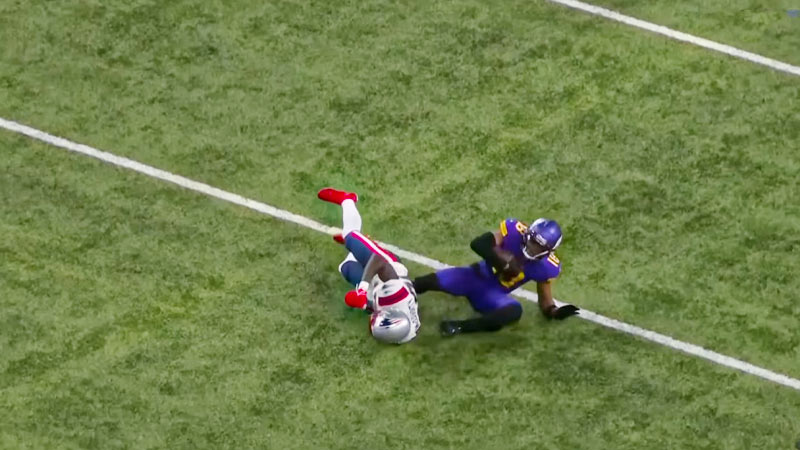As the roar of the crowd fills the air and players clash on the gridiron, football showcases its blend of athleticism, strategy, and precision. Within this captivating sport lies a complex set of rules that govern every play, ensuring fairness and sportsmanship.
One crucial aspect of these regulations is penalties, which can sway the course of a game. In this comprehensive guide, we turn our attention to football’s 5-yard penalties.
From understanding the intricacies of ineligible receivers downfield to unraveling the nuances of delay of kickoff return, we’re here to shed light on the lesser-known but equally vital infractions that shape the game we love.
List of NFL 5-Yard Penalties
When it’s about the football 5-yard penalties, the first that will come to your mind is the NFL. Here is the list of the top 10 NFL 5-yard penalties.
1. Delay of Game
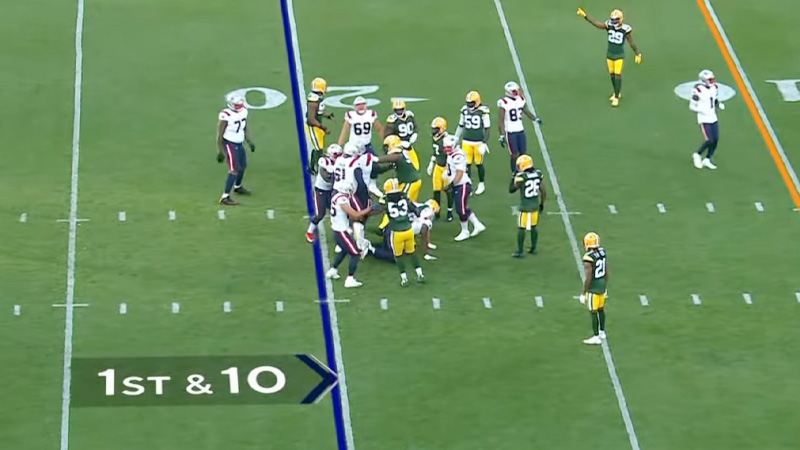
A “Delay of Game” penalty occurs when the offensive team fails to snap the ball within the allotted time after the play clock has reset. This can result from huddling for too long or not getting the snap off promptly.
This penalty indicates a lack of offensive coordination and results in a 5-yard loss for the offense. It places the team at a disadvantage, making it harder to convert third downs and potentially shifting field position.
2. Encroachment
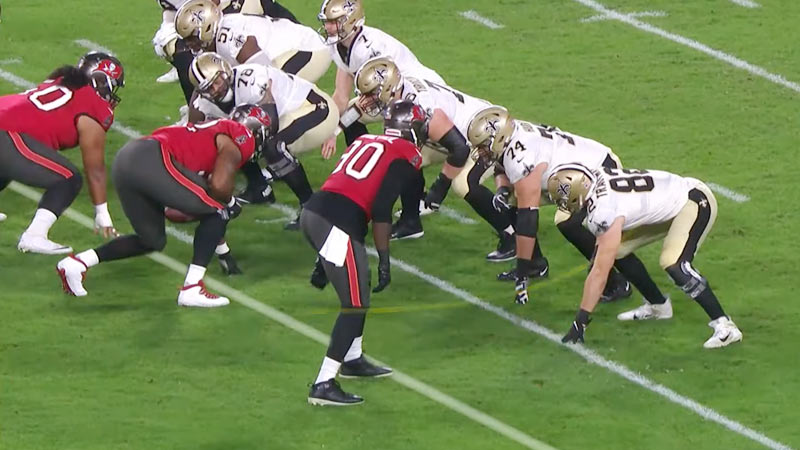
“Encroachment” is a defensive penalty that happens when a defensive player crosses the line of scrimmage and makes contact with an offensive player before the snap. It’s often a result of the defender trying to anticipate the snap count.
This infraction gives the offense an advantage by moving them five yards closer to the first down, providing a fresh set of downs, and putting the defense at a disadvantage.
3. False Start
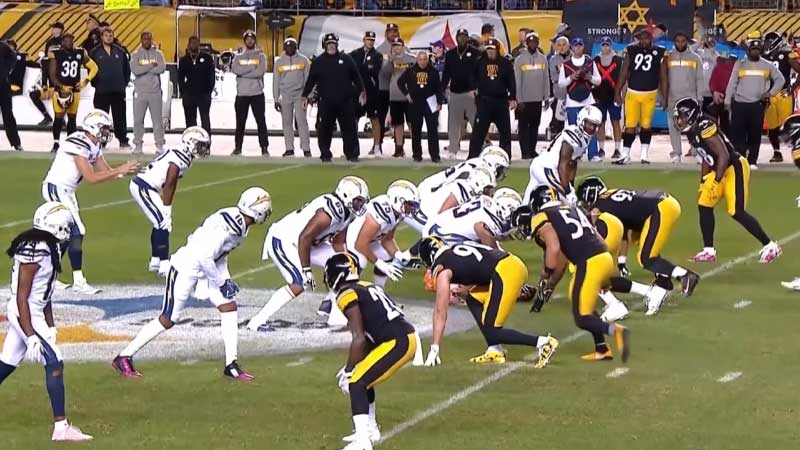
A “False Start” occurs when an offensive player, usually an offensive lineman, moves before the ball is snapped. It disrupts the rhythm of the play and can indicate a lack of concentration or miscommunication.
This penalty costs the offense five yards, making it more challenging to move the ball down the field.
False starts are a constant battle for offensive linemen, who must balance their anticipation of the snap with the rules regarding movement prior to the play.
4. Illegal Formation
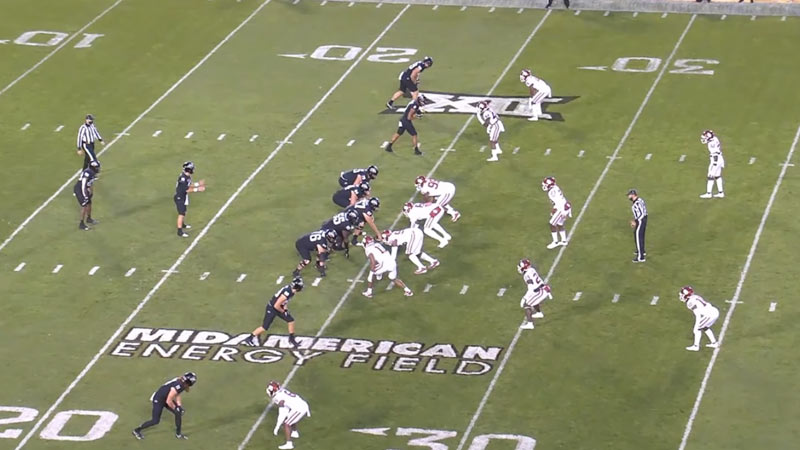
“Illegal Formation” penalties are called when the offense doesn’t line up properly before the snap.
This can involve having the wrong number of players on the line of scrimmage or having ineligible receivers positioned too far downfield. It’s a sign of confusion or breakdown in execution.
This penalty can lead to a 5-yard loss, wasting a down and making it harder to advance toward the first down marker.
5. Invalid Fair Catch Signal
An “Invalid Fair Catch Signal” penalty occurs during punt returns. If a returner signals for a fair catch but then attempts to advance the ball after signaling, it’s considered invalid.
This deceptive move is penalized with a 5-yard infraction, costing the receiving team valuable field position. It’s a violation of the rules that ensures the safety of players who slow down or stop when they see the fair catch signal.
6. Illegal Forward Handling
Illegal Forward Handling occurs when a player, typically a quarterback, intentionally moves the ball forward using their hands beyond the line of scrimmage.
This penalty aims to prevent deceptive plays that involve multiple forward tosses, maintaining the essence of football’s strategic nature.
The penalty results in a 5-yard loss and loss of down, discouraging teams from exploiting this tactic as a way to gain unfair yardage.
7. Illegal Forward Pass
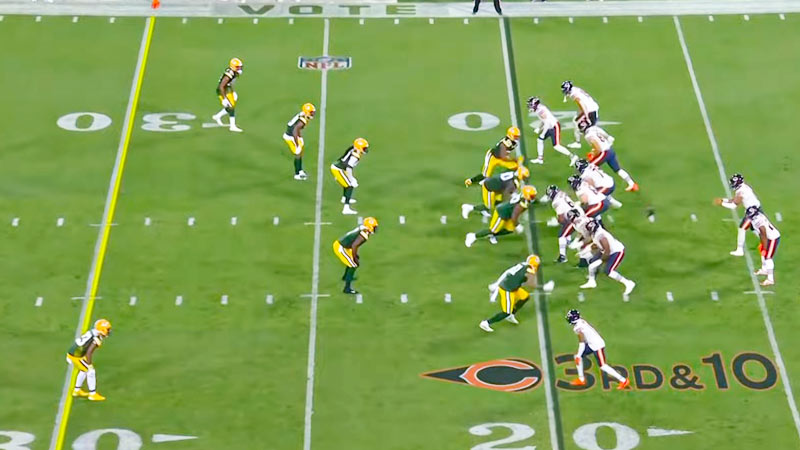
An Illegal Forward Pass happens when a player, usually the quarterback, throws the ball beyond the line of scrimmage after crossing it. This violation prevents double forward passes and maintains the game’s structure.
The penalty incurs a 5-yard loss and a loss of down, deterring teams from attempting unconventional double throws to gain an advantage.
8. Illegal Kick
An Illegal Kick penalty occurs when a player intentionally kicks the ball in a manner that violates the rules, such as kicking the ball after it’s been declared dead or using an unconventional kicking technique.
This penalty emphasizes the importance of fair play and proper ball handling. The result is a 5-yard penalty, discouraging players from exploiting unusual kicking actions to disrupt the game’s flow.
9. Illegal Motion
Illegal Motion refers to the movement of an offensive player before the snap in a manner that violates the rules of formation. It prevents deceptive shifts and ensures proper alignment before the play begins.
The penalty results in a 5-yard loss and a replay of the down, discouraging teams from attempting to confuse or deceive the defense with unlawful movements.
10. Running into Kickers
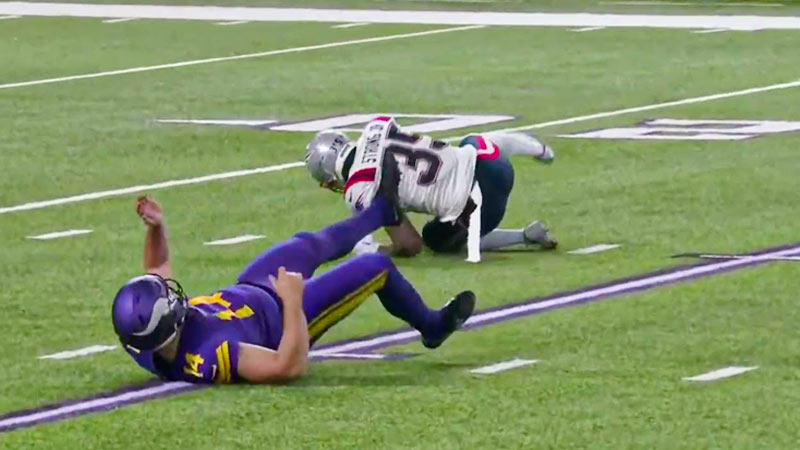
Running into Kickers occurs when a defensive player makes contact with the kicker after the ball has been kicked but without a full-on collision. This penalty safeguards the kicker’s safety and prevents potential injuries during punts or field goal attempts.
The result is a 5-yard penalty, granting the kicking team a slight advantage without awarding an automatic first down. This encourages defenders to exercise caution and avoid endangering the kicker during special teams’ plays.
List of College Football 5-Yard Penalties
In most cases, the 5-yard penalties are similar in both NFL and College football. Still, the following 5-yard penalties have made a significant in College football.
1. False Start
A false start occurs when an offensive player, usually an offensive lineman, moves before the ball is snapped. This penalty disrupts the timing of the play and confers a 5-yard loss to the offending team.
It often results from a player’s eagerness to anticipate the snap count, triggering movement that draws the defense offsides.
The penalty is a cautionary reminder of the precision required in football, emphasizing the importance of synchronized teamwork and disciplined execution.
2. Delay of Game

A delay of the game transpires when the offense fails to initiate a play within the allotted time after the previous play ends. This penalty indicates a lack of urgency and efficiency, warranting a 5-yard setback.
It commonly arises when teams struggle with communication, substitution, or hasty decision-making. The penalty pressures teams to swiftly organize, enhancing the pace and fluidity of the game.
The delay of game infraction serves as a reminder of the game’s rapid tempo and the necessity of coordinated orchestration in every play.
3. Offside
An offside penalty is charged against a defensive player who crosses the line of scrimmage prematurely before the snap. This infraction provides the offense a 5-yard advantage and a renewed opportunity to execute the play.
Often caused by defenders attempting to predict the snap count and gain an early edge, the offside penalty underscores the fine balance between anticipation and adherence to timing.
It showcases the importance of controlled aggression and precise timing in the strategic battle between offensive and defensive forces.
4. Encroachment
Encroachment is akin to offside, yet it’s typically a result of a defensive player making contact with an offensive player before the snap. This action encroaches upon the neutral zone, leading to a 5-yard gain for the offense.
Encroachment often stems from the defenders’ eagerness to disrupt the opposing play, revealing the constant cat-and-mouse dynamics of the game.
The penalty accentuates the importance of controlled aggression, reminding defenders of the thin line between tactical maneuvering and costly missteps.
5. Illegal Motion
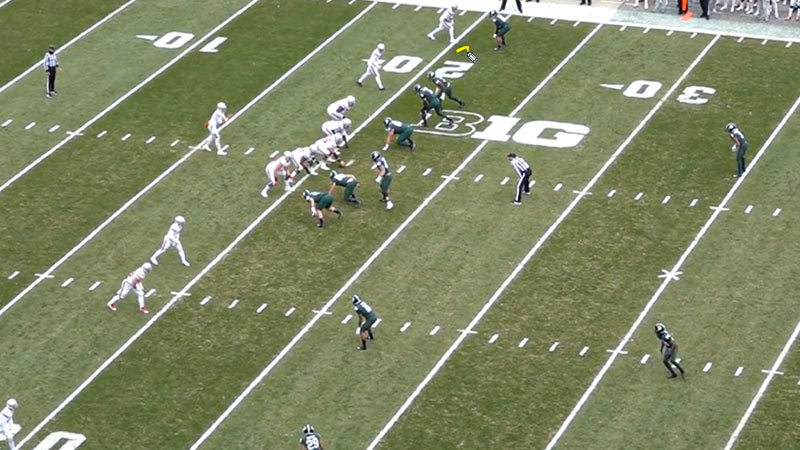
Illegal motion is committed when an offensive player is in motion at the snap and does not come to a complete stop before the ball is hiked.
This penalty showcases the need for disciplined and coordinated movement within the offensive scheme. Resulting in a 5-yard loss, illegal motion underscores the intricate choreography required among offensive players.
The infraction highlights the meticulous planning needed to execute plays seamlessly, reinforcing the principle that even a minor lack of synchronization can lead to a significant setback on the field.
6. Ineligible Receiver Downfield
An “Ineligible Receiver Downfield” penalty occurs when an offensive player who is not eligible to catch a forward pass, typically an offensive lineman, crosses the line of scrimmage before a pass is thrown.
This infraction often results from miscommunication or improper execution of plays. The penalty carries a 5-yard loss and is designed to prevent unfair advantages by ineligible players gaining a position downfield for a potential reception.
7. Neutral Zone Infraction
A “Neutral Zone Infraction” is a defensive penalty where a player crosses the line of scrimmage and makes contact with an offensive player before the ball is snapped.
This can disrupt the offense’s rhythm and draw offensive linemen into false starts. The infraction typically happens due to the defender’s eagerness to anticipate the snap count.
The 5-yard penalty is imposed to deter defenders from encroaching into the neutral zone and to maintain fair competition between the two sides.
8. Illegal Substitution
“Illegal Substitution” is called when a team attempts to substitute players while the ball is about to be snapped.
This penalty often results from confusion or miscommunication during player changes. Having too many players on the field can lead to a chaotic situation and unfair advantages.
The 5-yard penalty discourages hasty substitutions that could disrupt the flow of the game and ensures that each team adheres to proper substitution procedures.
9. Delay of Kickoff
“Delay of Kickoff” occurs when the kicking team fails to initiate the kickoff within the designated time frame after the referee signals the start of the play.
This delay might result from various reasons, such as player positioning, preparation, or equipment adjustments.
The 5-yard penalty reflects the importance of keeping the game’s pace and rhythm while ensuring that neither team gains an undue advantage due to extended pre-kick routines.
10. Delay of Kickoff Return
A “Delay of Kickoff Return” penalty takes place when the receiving team does not initiate the kickoff return within the specified timeframe after the kick lands in the field of play.
Such delays could be due to players hesitating, waiting for a potential touchback, or misjudging the trajectory of the kick.
The 5-yard penalty emphasizes the need to promptly engage in the return play, preventing unnecessary delays and maintaining the game’s tempo while giving both teams equal opportunities on special teams.
FAQs
What does an “ineligible receiver downfield” penalty entail?
An “ineligible receiver downfield” penalty occurs when an offensive player who can’t catch a forward pass crosses the line of scrimmage before the ball is thrown. This violation often involves linemen and results in a 5-yard penalty to maintain fair play.
How does a “neutral zone infraction” impact the game?
A “neutral zone infraction” is a defensive penalty where a player crosses the line of scrimmage and contacts an offensive player before the snap. The 5-yard penalty aims to prevent disruptive tactics and maintain the balance between offense and defense.
What constitutes an “illegal substitution” in football?
“Illegal substitution” happens when a team attempts to change players while the ball is about to be snapped. It results in a 5-yard penalty to discourage hurried substitutions that could disrupt the game’s flow.
When is a “delay of kickoff” penalty enforced?
“Delay of kickoff” occurs when the kicking team fails to initiate the kickoff within the specified timeframe after the referee’s signal. The 5-yard penalty emphasizes the importance of maintaining the game’s pace and rhythm.
How does “delay of kickoff return” affect special teams’ play?
A “delay of kickoff return” penalty takes place when the receiving team doesn’t promptly engage in the return play after the kick. This infraction, penalized by 5 yards, ensures an equal opportunity for both teams on special teams.
Wrapping Up
In the heart of football’s thundering clashes and exhilarating plays, the finesse of rules often goes unnoticed. Yet, these rules, especially the 5-yard penalties, are the threads weaving together the fabric of fair competition.
As players execute precision plays and fans cheer their teams to victory, it’s worth appreciating the intricacies of these infractions that shape the ebb and flow of each match.
This guide has unveiled the mysteries behind football’s 5-yard penalties, enriching our understanding of the game and its commitment to upholding the values of integrity and sportsmanship.
Hope you will get the points well. Thank you for your time.

